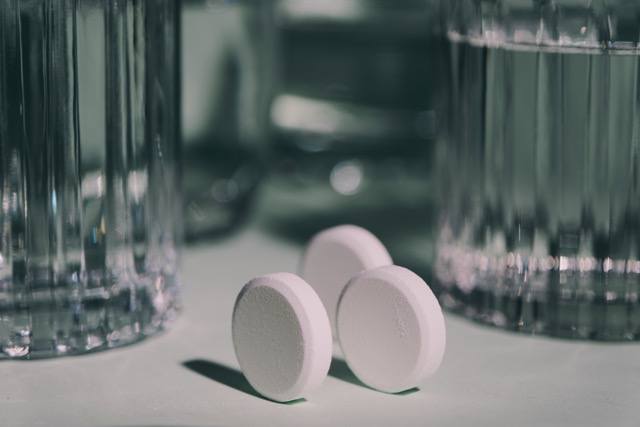Inflammaging: Inflammation As A Driving Force Behind The Aging Process
The role of chronic inflammation in the development of age-related diseases

Igor Lepilin
Aging is an inevitable process that involves a wide range of physiological changes in the body. As we age, our cells, tissues, and organs go through complex changes that affect our overall health and wellbeing. One of the new concepts that has attracted great attention in aging research is “inflammaging” — a term that describes the complex relationship between chronic inflammation and the aging process.
Here, the reasons for this link with aging are discussed, the underlying links are shown, and clues are given on how to potentially reduce the risk of this inflammatory phenomenon.
The dynamics of inflammation
Inflammation is a natural and vital response of the immune system to various external threats, such as infections and injuries. This releases immune cells, signaling molecules, and other factors to eliminate harmful substances and facilitate tissue repair. With increasing age, however, this finely balanced inflammatory response becomes unbalanced, resulting in a chronic, low-level inflammatory state known as inflammaging.
Inflammaging is characterized by a sustained increase in pro-inflammatory molecules such as cytokines and chemokines, even when there is no acute threat. This persistent state of inflammation has far-reaching effects on cellular and molecular processes throughout the body and contributes to the development and progression of many age-related diseases. Inflammation is not limited to a single organ or system, but has a systemic effect and affects several physiological processes simultaneously.
Inflammation and aging are inextricably linked
The relationship between inflammation and aging is complex and reciprocal. On the one hand, it is assumed that the development of inflammation is a result of the aging process itself. As cells age, they accumulate damage and go through changes that impair their ability to function optimally. This cellular dysfunction triggers an inflammatory response, with which the body tries to eliminate the damaged cells and restore homeostasis. On the other hand, inflammation also increases the aging process. The chronic inflammation associated with inflammation can accelerate cell damage, impair tissue regeneration, and disrupt the body's ability to repair itself.
Research has identified various factors that contribute to the development of inflammation. One of the key players is the immune system, which changes significantly as we age. The immune system is less and less able to differentiate between harmful invaders and the body's own cells, which leads to “immunological senescence.” This impaired immune function contributes to chronic inflammation and is associated with increased vulnerability to infections, autoimmune disorders, and other age-related illnesses.
Another factor that contributes to inflammation is the accumulation of senescent cells. These cells, which have lost their ability to divide and perform their normal functions, release a cocktail of inflammatory molecules that further fuels the inflammatory cascade. It is known that senescent cells accumulate in various tissues over time and thus contribute to tissue dysfunction and the development of age-related diseases.
Reducing the risk of inflammation
Although inflammation is a natural result of aging, there are strategies that can be used to reduce the risk and mitigate the damaging effects. Lifestyle factors play a crucial role in the balance between inflammatory and anti-inflammatory processes in the body.
Healthy diet
A balanced diet rich in antioxidants, vitamins, and minerals can help fight inflammation. Foods such as fruits, vegetables, whole grains, and oily fish are known for their anti-inflammatory properties. These foods can help neutralize free radicals and reduce oxidative stress, which plays an important role in causing inflammation.
Regular physical activity
Physical activity has been shown to have anti-inflammatory effects and can help regulate the immune system. Regular physical activity promotes the release of anti-inflammatory molecules, improves blood flow and supports overall immune function.
Stress management
Chronic stress can contribute to inflammation and accelerate the aging process. Stress management techniques such as meditation, yoga, and mindfulness exercises can help lower stress hormone levels and dampen the inflammatory response.
Adequate sleep
Good sleep is critical for immune function and overall health. Lack of sleep can lead to increased inflammation and impair the body's ability to regulate inflammatory processes.
Avoiding harmful habits
Certain lifestyle habits, such as smoking and excessive alcohol consumption, can promote inflammation. Stopping smoking and limiting alcohol consumption can contribute to a healthier inflammation profile.
Medical Interventions
In some cases, medical intervention may be necessary to control the inflammation. A doctor's consultation can help identify appropriate treatment options, such as taking anti-inflammatory drugs or other therapies.
Inflammaging represents a fascinating interface between inflammation and aging. This phenomenon highlights the complex interplay between cellular dysfunction, immune regulation and the body's response to external stimuli. While inflammation is an integral part of aging, a healthy lifestyle can mitigate the negative effects and promote healthy aging. As research continues to elucidate the underlying mechanisms of inflammation, the findings can pave the way for innovative strategies and measures aimed at extending life expectancy and improving the quality of life in old age.
References
- Chung HY, Kim DH, Lee EK, Chung KW, Chung S, Lee B, Seo AY, Chung JH, Young YS, Im E, Lee J, Kim ND, Choi YJ, In DS, Yu BP. Redefining Chronic Inflammation in Aging and Age-Related Diseases: Proposal of the Senoinflammation Concept. Aging Dis. 2019 Apr 1; 10 (2) :367-382. doi: 10.14336/AD.2018.0324. PMID: 31011483; PMCID: PMC6457053.
- Chung HY, Kim DH, Lee EK, Chung KW, Chung S, Lee B, Seo AY, Chung JH, Young YS, Im E, Lee J, Kim ND, Choi YJ, In DS, Yu BP. Redefining Chronic Inflammation in Aging and Age-Related Diseases: Proposal of the Senoinflammation Concept. Aging Dis. 2019 Apr 1; 10 (2) :367-382. doi: 10.14336/AD.2018.0324. PMID: 31011483; PMCID: PMC6457053.
- Farhangi MA, Keshavarz SA, Eshraghian M, Ostadrahimi A, Saboor-Yaraghi AA. White blood cell count in women: relation to inflammatory biomarkers, hematological profiles, visceral obesity, and other cardiovascular risk factors. J Health Popul Nutr. 2013 Mar; 31 (1) :58-64. doi: 10.3329/jhpn.v31i1.14749. PMID: 23617205; PMCID: PMC3702359.
- Farhangi MA, Keshavarz SA, Eshraghian M, Ostadrahimi A, Saboor-Yaraghi AA. White blood cell count in women: relation to inflammatory biomarkers, hematological profiles, visceral obesity, and other cardiovascular risk factors. J Health Popul Nutr. 2013 Mar; 31 (1) :58-64. doi: 10.3329/jhpn.v31i1.14749. PMID: 23617205; PMCID: PMC3702359.
- Bray C, Bell LN, Liang H, Haykal R, Kaiksow F, Mazza JJ, Yale SH. Erythrocyte Sedimentation Rate and C-reactive Protein Measurements and Their Relevance in Clinical Medicine. WMJ. 2016 Dec; 115 (6) :317-21. PMID: 29094869.
- Farhangi MA, Keshavarz SA, Eshraghian M, Ostadrahimi A, Saboor-Yaraghi AA. White blood cell count in women: relation to inflammatory biomarkers, hematological profiles, visceral obesity, and other cardiovascular risk factors. J Health Popul Nutr. 2013 Mar; 31 (1) :58-64. doi: 10.3329/jhpn.v31i1.14749. PMID: 23617205; PMCID: PMC3702359.
- Farhangi MA, Keshavarz SA, Eshraghian M, Ostadrahimi A, Saboor-Yaraghi AA. White blood cell count in women: relation to inflammatory biomarkers, hematological profiles, visceral obesity, and other cardiovascular risk factors. J Health Popul Nutr. 2013 Mar; 31 (1) :58-64. doi: 10.3329/jhpn.v31i1.14749. PMID: 23617205; PMCID: PMC3702359.
Publiziert
30.6.2025
Kategorie
Health

Experte
Scientific Terms
C-reactive protein (CRP)
“C-reactive protein” (CRP) is the most important blood laboratory value for identifying and monitoring inflammation in the body. CRP is a protein that is produced in the liver. (https://www.gesundheit.gv.at/labor/laborwerte/infektionen-bakterien/crp.html)
Homeostasis
Ancient Greek μо́́́shomoiostásis, German 'equality'
The condition that results from maintaining a controlled environment within cells, which is regulated in part by hormones produced by the endocrine glands. As far as humans are concerned, this is the stable state in which our bodies are in balance.
Inflammaging
Inflammatory aging (the English term inflam-aging or inflammaging is also widely used in German-speaking countries) refers to the increased release of pro-inflammatory cytokines and associated chronic diseases in older people.
Seneszens
Latin senescere “getting old”, “aging”
The process of deterioration with age.
Cellular Senescence
The process that occurs when normal cells stop dividing and start releasing inflammatory molecules, sometimes caused by telomere shortening, DNA damage, or epigenomic noise. Despite their apparent “zombie” state, senescent cells remain alive and damage neighboring cells with their inflammatory secretions.
Aging is an inevitable process that involves a wide range of physiological changes in the body. As we age, our cells, tissues, and organs go through complex changes that affect our overall health and wellbeing. One of the new concepts that has attracted great attention in aging research is “inflammaging” — a term that describes the complex relationship between chronic inflammation and the aging process.
Here, the reasons for this link with aging are discussed, the underlying links are shown, and clues are given on how to potentially reduce the risk of this inflammatory phenomenon.
The dynamics of inflammation
Inflammation is a natural and vital response of the immune system to various external threats, such as infections and injuries. This releases immune cells, signaling molecules, and other factors to eliminate harmful substances and facilitate tissue repair. With increasing age, however, this finely balanced inflammatory response becomes unbalanced, resulting in a chronic, low-level inflammatory state known as inflammaging.
Inflammaging is characterized by a sustained increase in pro-inflammatory molecules such as cytokines and chemokines, even when there is no acute threat. This persistent state of inflammation has far-reaching effects on cellular and molecular processes throughout the body and contributes to the development and progression of many age-related diseases. Inflammation is not limited to a single organ or system, but has a systemic effect and affects several physiological processes simultaneously.
Inflammation and aging are inextricably linked
The relationship between inflammation and aging is complex and reciprocal. On the one hand, it is assumed that the development of inflammation is a result of the aging process itself. As cells age, they accumulate damage and go through changes that impair their ability to function optimally. This cellular dysfunction triggers an inflammatory response, with which the body tries to eliminate the damaged cells and restore homeostasis. On the other hand, inflammation also increases the aging process. The chronic inflammation associated with inflammation can accelerate cell damage, impair tissue regeneration, and disrupt the body's ability to repair itself.
Research has identified various factors that contribute to the development of inflammation. One of the key players is the immune system, which changes significantly as we age. The immune system is less and less able to differentiate between harmful invaders and the body's own cells, which leads to “immunological senescence.” This impaired immune function contributes to chronic inflammation and is associated with increased vulnerability to infections, autoimmune disorders, and other age-related illnesses.
Another factor that contributes to inflammation is the accumulation of senescent cells. These cells, which have lost their ability to divide and perform their normal functions, release a cocktail of inflammatory molecules that further fuels the inflammatory cascade. It is known that senescent cells accumulate in various tissues over time and thus contribute to tissue dysfunction and the development of age-related diseases.
Reducing the risk of inflammation
Although inflammation is a natural result of aging, there are strategies that can be used to reduce the risk and mitigate the damaging effects. Lifestyle factors play a crucial role in the balance between inflammatory and anti-inflammatory processes in the body.
Healthy diet
A balanced diet rich in antioxidants, vitamins, and minerals can help fight inflammation. Foods such as fruits, vegetables, whole grains, and oily fish are known for their anti-inflammatory properties. These foods can help neutralize free radicals and reduce oxidative stress, which plays an important role in causing inflammation.
Regular physical activity
Physical activity has been shown to have anti-inflammatory effects and can help regulate the immune system. Regular physical activity promotes the release of anti-inflammatory molecules, improves blood flow and supports overall immune function.
Stress management
Chronic stress can contribute to inflammation and accelerate the aging process. Stress management techniques such as meditation, yoga, and mindfulness exercises can help lower stress hormone levels and dampen the inflammatory response.
Adequate sleep
Good sleep is critical for immune function and overall health. Lack of sleep can lead to increased inflammation and impair the body's ability to regulate inflammatory processes.
Avoiding harmful habits
Certain lifestyle habits, such as smoking and excessive alcohol consumption, can promote inflammation. Stopping smoking and limiting alcohol consumption can contribute to a healthier inflammation profile.
Medical Interventions
In some cases, medical intervention may be necessary to control the inflammation. A doctor's consultation can help identify appropriate treatment options, such as taking anti-inflammatory drugs or other therapies.
Inflammaging represents a fascinating interface between inflammation and aging. This phenomenon highlights the complex interplay between cellular dysfunction, immune regulation and the body's response to external stimuli. While inflammation is an integral part of aging, a healthy lifestyle can mitigate the negative effects and promote healthy aging. As research continues to elucidate the underlying mechanisms of inflammation, the findings can pave the way for innovative strategies and measures aimed at extending life expectancy and improving the quality of life in old age.
Referenzen
- Chung HY, Kim DH, Lee EK, Chung KW, Chung S, Lee B, Seo AY, Chung JH, Young YS, Im E, Lee J, Kim ND, Choi YJ, In DS, Yu BP. Redefining Chronic Inflammation in Aging and Age-Related Diseases: Proposal of the Senoinflammation Concept. Aging Dis. 2019 Apr 1; 10 (2) :367-382. doi: 10.14336/AD.2018.0324. PMID: 31011483; PMCID: PMC6457053.
- Chung HY, Kim DH, Lee EK, Chung KW, Chung S, Lee B, Seo AY, Chung JH, Young YS, Im E, Lee J, Kim ND, Choi YJ, In DS, Yu BP. Redefining Chronic Inflammation in Aging and Age-Related Diseases: Proposal of the Senoinflammation Concept. Aging Dis. 2019 Apr 1; 10 (2) :367-382. doi: 10.14336/AD.2018.0324. PMID: 31011483; PMCID: PMC6457053.
- Farhangi MA, Keshavarz SA, Eshraghian M, Ostadrahimi A, Saboor-Yaraghi AA. White blood cell count in women: relation to inflammatory biomarkers, hematological profiles, visceral obesity, and other cardiovascular risk factors. J Health Popul Nutr. 2013 Mar; 31 (1) :58-64. doi: 10.3329/jhpn.v31i1.14749. PMID: 23617205; PMCID: PMC3702359.
- Farhangi MA, Keshavarz SA, Eshraghian M, Ostadrahimi A, Saboor-Yaraghi AA. White blood cell count in women: relation to inflammatory biomarkers, hematological profiles, visceral obesity, and other cardiovascular risk factors. J Health Popul Nutr. 2013 Mar; 31 (1) :58-64. doi: 10.3329/jhpn.v31i1.14749. PMID: 23617205; PMCID: PMC3702359.
- Bray C, Bell LN, Liang H, Haykal R, Kaiksow F, Mazza JJ, Yale SH. Erythrocyte Sedimentation Rate and C-reactive Protein Measurements and Their Relevance in Clinical Medicine. WMJ. 2016 Dec; 115 (6) :317-21. PMID: 29094869.
- Farhangi MA, Keshavarz SA, Eshraghian M, Ostadrahimi A, Saboor-Yaraghi AA. White blood cell count in women: relation to inflammatory biomarkers, hematological profiles, visceral obesity, and other cardiovascular risk factors. J Health Popul Nutr. 2013 Mar; 31 (1) :58-64. doi: 10.3329/jhpn.v31i1.14749. PMID: 23617205; PMCID: PMC3702359.
- Farhangi MA, Keshavarz SA, Eshraghian M, Ostadrahimi A, Saboor-Yaraghi AA. White blood cell count in women: relation to inflammatory biomarkers, hematological profiles, visceral obesity, and other cardiovascular risk factors. J Health Popul Nutr. 2013 Mar; 31 (1) :58-64. doi: 10.3329/jhpn.v31i1.14749. PMID: 23617205; PMCID: PMC3702359.
Publiziert
30.6.2025
Kategorie
Health

Wissenschaftliche Begriffe
C-reactive protein (CRP)
“C-reactive protein” (CRP) is the most important blood laboratory value for identifying and monitoring inflammation in the body. CRP is a protein that is produced in the liver. (https://www.gesundheit.gv.at/labor/laborwerte/infektionen-bakterien/crp.html)
Homeostasis
Ancient Greek μо́́́shomoiostásis, German 'equality'
The condition that results from maintaining a controlled environment within cells, which is regulated in part by hormones produced by the endocrine glands. As far as humans are concerned, this is the stable state in which our bodies are in balance.
Inflammaging
Inflammatory aging (the English term inflam-aging or inflammaging is also widely used in German-speaking countries) refers to the increased release of pro-inflammatory cytokines and associated chronic diseases in older people.
Seneszens
Latin senescere “getting old”, “aging”
The process of deterioration with age.
Cellular Senescence
The process that occurs when normal cells stop dividing and start releasing inflammatory molecules, sometimes caused by telomere shortening, DNA damage, or epigenomic noise. Despite their apparent “zombie” state, senescent cells remain alive and damage neighboring cells with their inflammatory secretions.
.svg)














